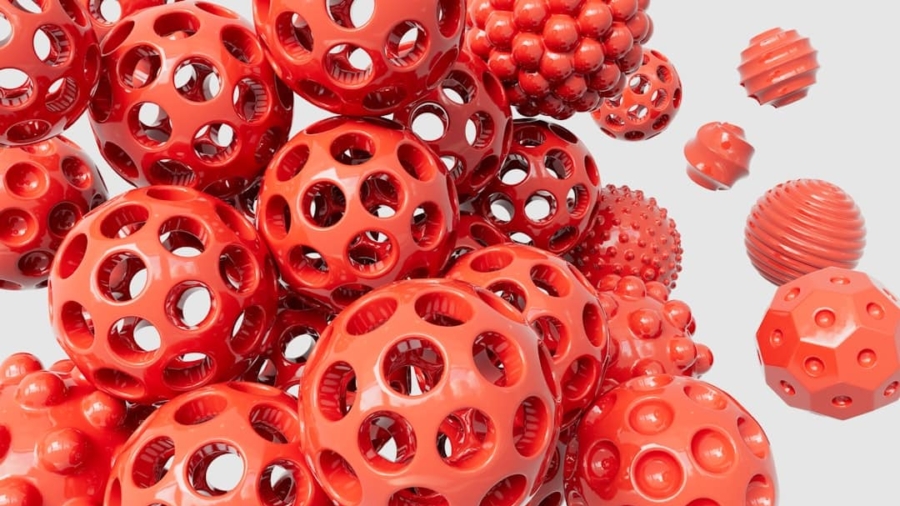The advent of 3D printing technology has revolutionized various industries on Earth, and its potential applications in space habitats are equally transformative. As humanity sets its sights on long-duration missions to destinations such as Mars and beyond, the need for sustainable living solutions becomes paramount. Traditional methods of manufacturing and transporting materials to space are not only costly but also logistically challenging.
3D printing offers a compelling alternative by enabling the on-demand production of tools, components, and even entire habitats using local resources. This capability could significantly reduce the weight and volume of supplies that need to be launched from Earth, thereby making space missions more feasible and cost-effective. In the context of space exploration, 3D printing can facilitate the creation of structures and systems that are tailored to the unique conditions of extraterrestrial environments.
For instance, habitats on Mars would need to withstand extreme temperatures, radiation, and dust storms.
This adaptability not only enhances the resilience of space habitats but also fosters a sense of autonomy for astronauts, allowing them to respond to unforeseen challenges with innovative solutions.
Key Takeaways
- 3D printing in space habitats allows for on-demand manufacturing of tools, parts, and even entire structures, reducing the need for extensive pre-mission planning and storage of spare parts.
- Advantages of 3D printing in long-duration space missions include cost savings, reduced payload mass, and the ability to adapt to unforeseen circumstances by producing necessary items on-site.
- Challenges and limitations of 3D printing in space habitats include the need for reliable and safe printing technology, limitations in available materials, and the impact of microgravity on the printing process.
- Materials used in 3D printing for space habitats include plastics, metals, ceramics, and even regolith (lunar or Martian soil) for in-situ resource utilization.
- Applications of 3D printing in space habitats range from producing spare parts and tools to building entire habitats, enabling sustainable long-term human presence in space.
- Future developments and innovations in 3D printing for space habitats may include advancements in printing technology, new materials, and the integration of robotics for autonomous construction.
- Collaboration and partnerships in advancing 3D printing for space habitats involve space agencies, private companies, research institutions, and international cooperation to pool resources and expertise.
- The potential of 3D printing in supporting long-duration space habitats is vast, offering a sustainable and flexible approach to space exploration and colonization.
Advantages of 3D Printing in Long-Duration Space Missions
On-Demand Production in Space
One of the most significant advantages of 3D printing in long-duration space missions is its ability to produce items on-demand. In traditional space missions, astronauts rely heavily on pre-packaged supplies that are launched from Earth. This approach limits flexibility and can lead to shortages of critical components if unexpected needs arise.
Reducing Dependency on Resupply Missions
With 3D printing, astronauts can create tools, spare parts, and even food items as needed, reducing the dependency on resupply missions. This capability is particularly crucial for missions to distant destinations where resupply options are limited or non-existent. Moreover, 3D printing can enhance sustainability in space habitats.
Sustainable Space Habitation
By utilizing in-situ resources—such as regolith on the Moon or Mars—astronauts can minimize the amount of material that must be transported from Earth. This not only reduces launch costs but also lessens the environmental impact associated with space travel. For example, researchers have explored the use of lunar regolith as a feedstock for 3D printing, which could enable the construction of habitats directly on the Moon’s surface.
A Sustainable Future in Space
Such practices would pave the way for more sustainable exploration and habitation strategies, allowing humans to establish a presence beyond Earth without depleting terrestrial resources.
Challenges and Limitations of 3D Printing in Space Habitats
Despite its numerous advantages, 3D printing in space habitats is not without challenges. One major limitation is the current state of technology and materials available for use in extraterrestrial environments. While 3D printers have been successfully tested aboard the International Space Station (ISS), the range of materials that can be effectively printed in microgravity is still limited.
The mechanical properties of printed objects can vary significantly from those produced on Earth due to differences in gravity and atmospheric conditions. This variability raises concerns about the reliability and durability of printed components, especially when they are intended for critical applications. Another challenge lies in the energy requirements for operating 3D printers in space.
The energy needed to power these machines must be carefully managed, particularly during long-duration missions where resources are finite. Solar panels may provide a renewable energy source, but their efficiency can be affected by dust accumulation or damage from micrometeoroids. Additionally, the thermal environment in space can pose challenges for maintaining optimal operating conditions for 3D printers.
Engineers must develop robust systems that can withstand these harsh conditions while ensuring consistent performance.
Materials Used in 3D Printing for Space Habitats
The choice of materials for 3D printing in space habitats is critical to the success of this technology. Various materials have been explored for their suitability in extraterrestrial environments, each with its own set of advantages and limitations. One promising category is polymer-based materials, such as PLA (polylactic acid) and ABS (acrylonitrile butadiene styrene).
These materials are lightweight and relatively easy to print, making them ideal candidates for creating non-structural components like tools and containers. However, polymers may not provide the necessary strength or durability for structural applications in space habitats. As a result, researchers are investigating advanced materials such as metal alloys and composites that can withstand extreme conditions.
For instance, titanium and aluminum alloys have been studied for their high strength-to-weight ratios and resistance to corrosion. These materials could be used to fabricate critical structural components that require enhanced mechanical properties. Additionally, researchers are exploring the use of bio-based materials derived from organic sources, which could offer sustainable alternatives while also being compatible with existing 3D printing technologies.
Applications of 3D Printing in Space Habitats
The applications of 3D printing in space habitats are vast and varied, ranging from construction to life support systems. One of the most exciting possibilities is the construction of entire habitats using additive manufacturing techniques. NASA’s “Mars Habitat Challenge” has encouraged teams to design and build prototypes that utilize 3D printing to create livable spaces on Mars.
These designs often incorporate features such as radiation shielding and thermal insulation, addressing the unique challenges posed by the Martian environment. In addition to habitat construction, 3D printing can play a crucial role in developing life support systems. For example, astronauts could print components for water filtration systems or air purification devices as needed.
This capability would ensure that essential systems remain operational throughout long-duration missions without relying on pre-packaged supplies. Furthermore, 3D printing could enable the production of food items through bioprinting techniques, where edible materials are layered to create nutritious meals tailored to individual dietary needs.
Future Developments and Innovations in 3D Printing for Space Habitats
Enhancing 3D Printer Capabilities
One area of focus is improving the efficiency and capabilities of 3D printers themselves. Innovations such as multi-material printing could allow astronauts to create complex structures with varying properties within a single print job. This capability would enable the production of components that combine strength with flexibility or insulation with conductivity, tailored specifically for their intended functions.
Integrating Artificial Intelligence into 3D Printing
Another exciting avenue is the integration of artificial intelligence (AI) into 3D printing processes. AI algorithms could optimize print parameters in real-time based on environmental conditions or material properties, ensuring consistent quality and performance.
Streamlining Production Workflows
Additionally, machine learning techniques could analyze data from previous prints to improve future designs and processes continuously. Such advancements would not only enhance the reliability of printed components but also streamline production workflows, making it easier for astronauts to create what they need when they need it.
Collaboration and Partnerships in Advancing 3D Printing for Space Habitats
The advancement of 3D printing technology for space habitats relies heavily on collaboration between various stakeholders, including government agencies, private companies, and academic institutions. NASA has been at the forefront of this effort, partnering with organizations like ICON and SEArch+ to explore innovative construction techniques using 3D printing on extraterrestrial surfaces. These collaborations leverage diverse expertise and resources to accelerate research and development efforts.
Private companies are also playing a significant role in advancing this technology. For instance, companies like Made In Space have developed specialized 3D printers designed for use aboard the ISS, enabling astronauts to produce tools and components directly in orbit. Such partnerships not only foster innovation but also create a shared vision for sustainable human presence beyond Earth.
By pooling resources and knowledge across sectors, stakeholders can address challenges more effectively and push the boundaries of what is possible with 3D printing in space habitats.
The Potential of 3D Printing in Supporting Long-Duration Space Habitats
The potential of 3D printing in supporting long-duration space habitats is immense, offering solutions that could redefine how humans live and work beyond Earth. By enabling on-demand production of essential items and utilizing local resources, this technology addresses many logistical challenges associated with deep-space exploration. As advancements continue to unfold—ranging from material innovations to collaborative efforts—the vision of sustainable human habitation on other planets becomes increasingly attainable.
The journey toward establishing permanent outposts on celestial bodies will undoubtedly require overcoming numerous obstacles; however, with continued investment in research and development, coupled with strategic partnerships across various sectors, humanity stands poised to harness the full potential of 3D printing technology in shaping our future among the stars.
An interesting related article to The Role of 3D Printing in Supporting Long-Duration Space Habitats can be found on Hacker Noon, which covers a range of topics across the tech sector. This article may provide additional insights into the latest advancements in technology that could potentially impact the development of long-duration space habitats. To read more about this, check out the article




